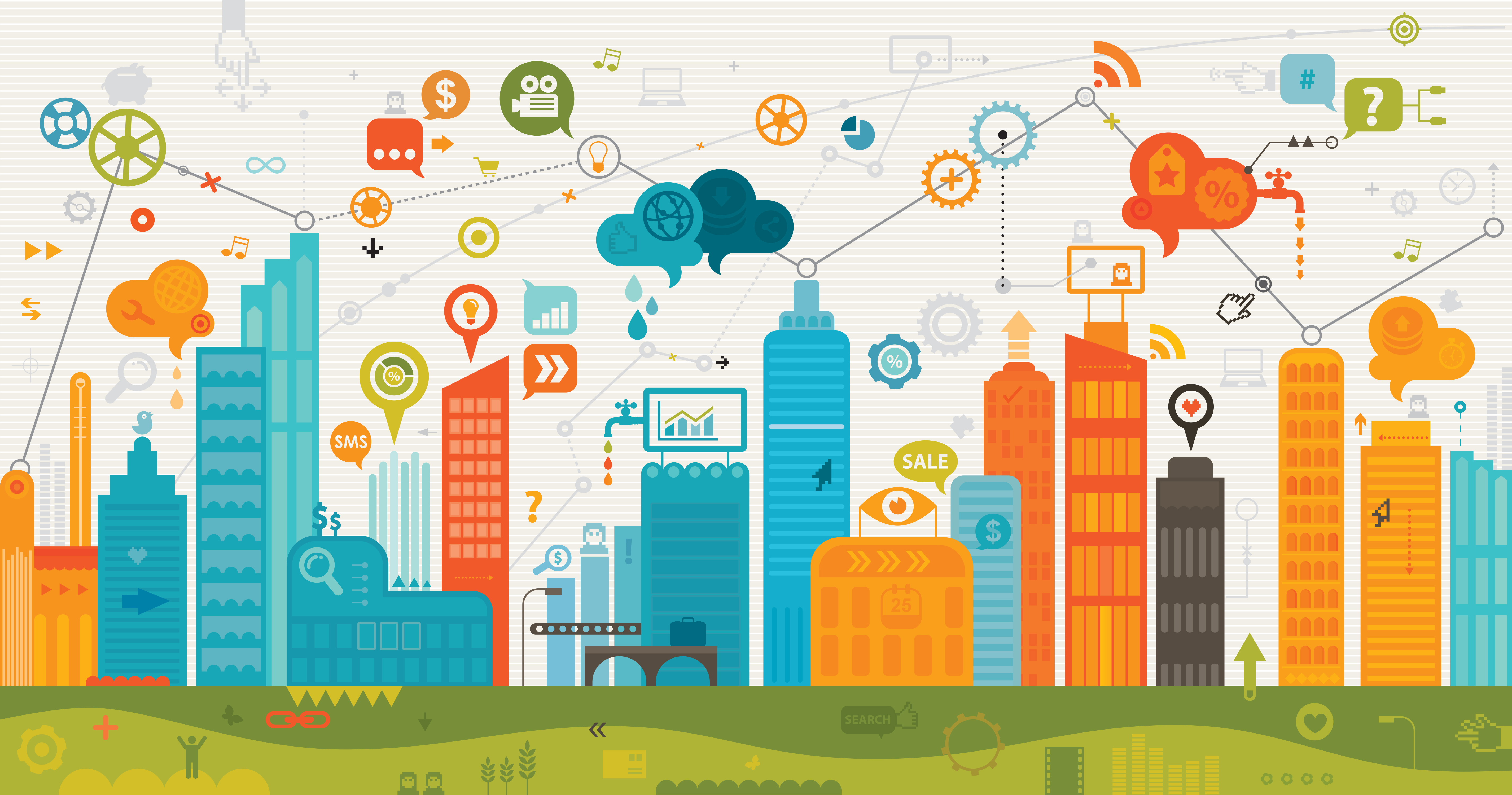Imagine a thriving metropolis that provides its residents with shorter commutes, multi-modal transportation, and the ability to park “smarter.” What if this urban oasis also optimized its resource consumption through environmentally-conscious waste management and green buildings, smart meters, and a focus on renewable energy sources? This mythical-sounding place exists, and it’s called a Smart City.
Though the concept of a Smart City has been the buzz for several years, there is no firm definition for the term. Pew Charitable Trusts found that leaders in this emerging industry consider a Smart City to represent a community that uses technological innovations and data analytics to improve the lives of citizens.
To realize the vast benefits of a technology-connected and supported environment, the internet of things (IoT) will play a crucial role in the infrastructure of current and future Smart Cities. IoT devices can be used to monitor anything from energy and water consumption to traffic patterns. The data gathered from sensors within the IoT devices is later analyzed and used to create efficiencies that lead to improved safety, resource sustainability, and a higher quality of life.
The ability to optimize city living has sparked the development of Smart Cities of all sizes across the country. In fact, Kansas City, Missouri, established a public-private partnership among the state and local governments, Google Fiber, and local startups and small businesses to develop what is now deemed the “world’s most connected Smart City.” The two-mile stretch located in Kansas City’s center, also known as the Smart City Corridor, features an array of cutting-edge technologies, including a live map that allows residents and visitors to see “available parking, traffic flow and pedestrian hot spots” in real time. Traffic signals and street lights are also equipped with responsive technologies that not only detect pedestrian and vehicle activity, but they also use algorithms to optimize traffic patterns. The city also boasts free public wi-fi and interactive information kiosks, all of which add to the Smart City experience.
On the west coast, Microsoft Co-Founder Bill Gates plans to build a Smart City from the ground up, providing a tech oasis in the Arizona desert. In November 2017, Gates announced an $80 million investment in Belmont, a high-tech community about 45 minutes outside of Phoenix. Serving roughly 182,000 citizens, Belmont’s infrastructure will be designed around high-speed networks and will employ “cutting-edge technology, data centers, new manufacturing technologies and distribution models, autonomous vehicles, and autonomous logistics hubs.”
While the potential for Smart Cities seems unlimited, their prospect poses challenges, particularly for privacy. A majority of the technologies used to support a Smart City depend on wireless IP networks, which are often more susceptible to cybersecurity vulnerabilities than their wired counterparts. Once a cybercriminal breaches a wireless network, they could manipulate and cause serious damage to the city’s infrastructure and citizens. If cybersecurity is not preserved, hackers have the potential to do anything from disabling a city’s power grid to manipulating transportation-related data to create traffic jams and car accidents. Smart City security considerations can have a personal impact as well, particularly as IoT sensors and technologies continuously gather, store, and analyze citizens’ data to improve the city’s offerings and efficiencies. While the data collected is typically scrubbed of personally identifiable information (PII), if compromised, it can be combined with other data sets to compile lengthy profiles on an individual or communities. Those who build and manage Smart Cities recognize these cybersecurity concerns, which can create new opportunities for the solutions put forth by small business innovators. Still, the fact remains: the benefits of a Smart City far outweigh the concerns.
At ACT | The App Association, we know the incredible innovations and ideas our members can contribute to the development and success of a Smart City. We also know that to create successful tech-oriented cities, state and local governments must organize ecosystems of open collaboration with the private sector. But how can small businesses or startups get involved in this process? The Small Business Administration (SBA) makes it easier with a program called the small business set-aside, which helps small businesses win federal contracts for projects like Smart City development. Every year the federal government spends roughly $400 billion on government contracts that are ultimately awarded to private-sector companies that provide goods or services for the government. The small business set-aside ensures that a portion of the spending is dedicated to small businesses that can get the job done.
There are countless opportunities across the United States to help turn your community into a Smart—or at least a smarter—City. State and local governments regularly issue Requests for Proposals (RFPs) for Smart City projects, and programs like the SBA’s small business set-aside exist to ensure that America’s small businesses can play a role in the development of big things.
Think your community is a good candidate for a technology revamp? Want to get involved in turning your hometown into a Smart City? Let us know, and we can help get you started down the right path.
Image Source: Sogeti
